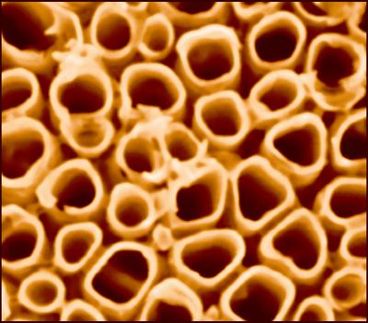Using solid-state materials with gold nanoantennas for more durable solar cells
Improving their ability to function under harsh environmental conditions
Advertisement
Scientists at Hokkaido University in Japan are making leeway in the fabrication of all-solid-state solar cells that are highly durable and can efficiently convert sunlight into energy. The team employed a method called “atomic layer deposition”, which allows scientists to control the deposit of very thin, uniform layers of materials on top of each other. Using this method, they deposited a thin film of nickel oxide onto a single crystal of titanium dioxide. gold nanoparticles were introduced between the two layers to act like an antenna that harvests visible light.

A solid-state solar cell composed of titanium dioxide, nickel oxide, and gold nanoparticles. Gold nanoparticles harvest light and provide a visible light response to the cell
Tomoya OSHIKIRI, Hokkaido University
The team tested the properties of these fabricated devices with and without an intermediary step following the deposition of nickel oxide that involves heating it to very high temperatures and then allowing it to slowly cool – a process called “annealing”.
Photocurrent generation was successfully observed on the all-solid-state photoelectric conversion device. The device was found to be highly durable and stable because, unlike some solar cells, it does not contain organic components, which have a tendency to degrade over time and under harsh conditions.
The researchers also found that annealing affected the properties of the device by changing the interfacial structure of the layers. For example, it increased the voltage available from the device but also increased the resistance within it. It also decreased the device’s efficiency in converting light to electricity. The results suggest that the structural changes caused by annealing prevent the layer of gold nanoparticles from injecting electrons into the titanium dioxide layer.
The team’s fabrication process is inexpensive and can be scaled up easily but the resultant device’s properties are still insufficient for practical use and its efficiency in converting light to energy needs to be improved. Further research is needed to understand the roles of each layer in conducting energy to improve the device’s efficiency.


























































